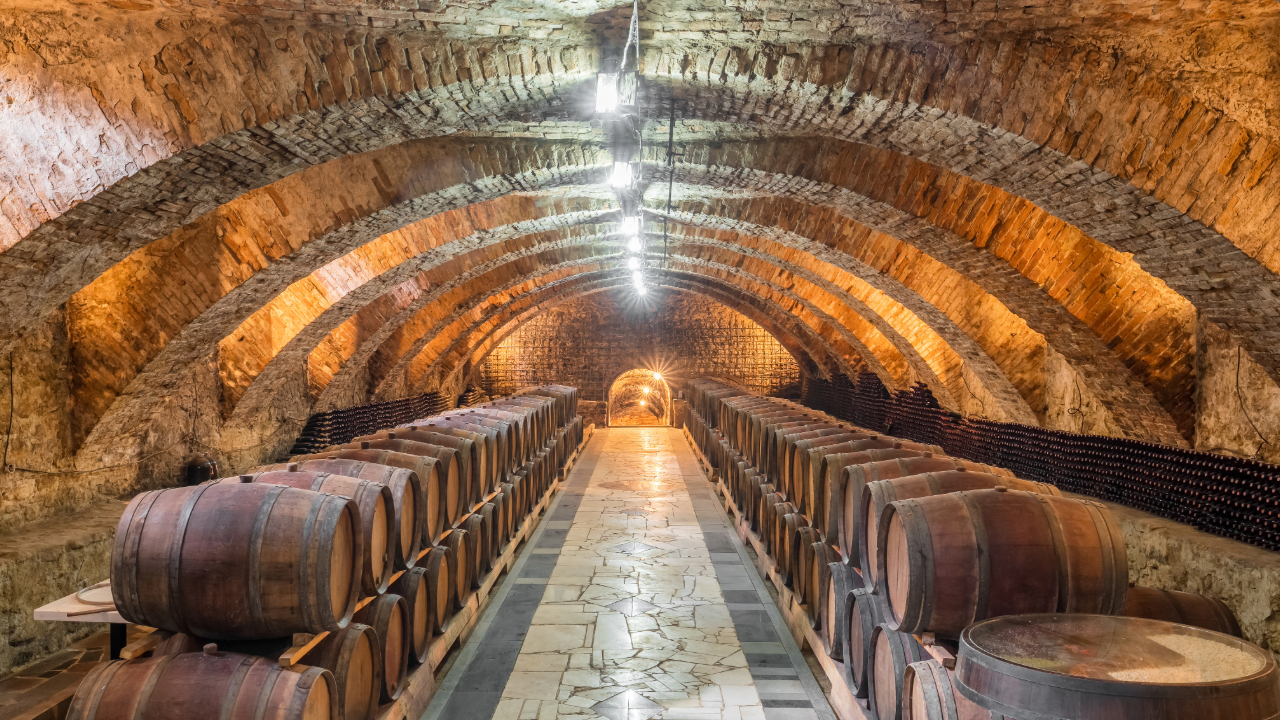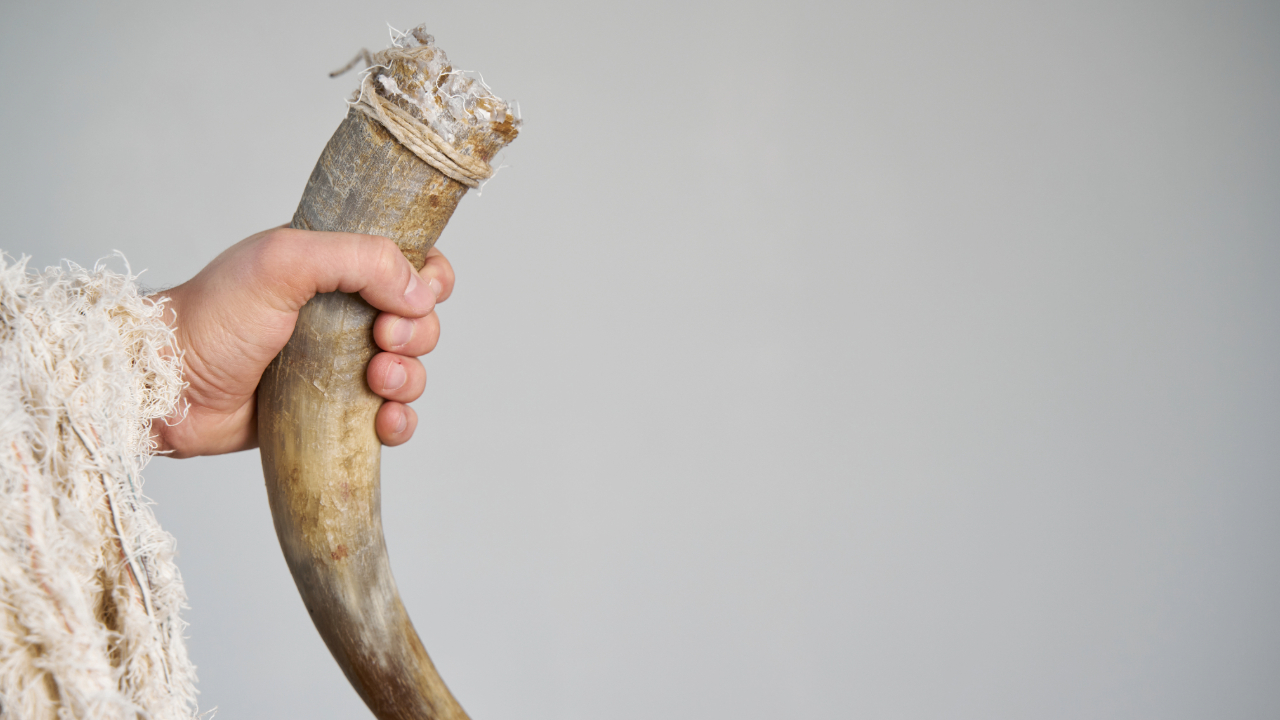When it comes to fine spirits, there exists a timeless paradox. On one hand, these libations stand as enduring testaments to history, unchanged in essence since their inception. On the other, they have evolved dramatically, with each era imprinting its unique signature upon their character.
This dynamic interplay of constancy and change is what beckons us into a world where the past is preserved in a bottle, and each sip is a journey through time and taste.
Consider the ancient distilleries, where the art of spirit-making began. The methods may have been primitive by today’s standards, yet they laid the foundation for a craft that would fascinate and evolve over centuries. These spirits, steeped in history, carry with them stories of the lands from which they emerged and the people who crafted them. They are more than mere drinks; they are liquid legacies.
But it is not just the age of these spirits that captivates us. It is their rarity. In the world of spirits, rarity is not merely a measure of scarcity; it is a reflection of uniqueness, of extraordinary processes and ingredients that cannot be easily replicated.
These rare spirits are the gems of the alcohol world, sought after by connoisseurs and collectors alike, each bottle holding within it a narrative of exceptional craft and time-honored tradition.
As we explore the world’s oldest and rarest spirits, we are not just recounting tales of distillation. We are uncovering a rich tapestry of history, culture, and craftsmanship. From the amber depths of ancient whiskies to the clear brilliance of vintage vodkas, each spirit tells a story, a testament to the enduring allure of these timeless treasures.
In this journey, we will traverse the globe, discovering the secrets behind these exquisite concoctions. We will examine the heart of what makes a spirit not just old, but extraordinary. So, let us raise our glasses to this exploration, a toast to the rare, the aged, and the magnificent – a true journey through time and taste.
The Timeless Legacy of Ancient Spirits
The very origins of alcohol are not solely a human endeavor. Nature itself, in its unbridled creativity, began the process long before humans grasped the art.
Animals, drawn to the intoxicating effects of fermented fruits, unwittingly paved the way for what would become one of humanity’s most cherished crafts. This ancient dance between nature and fermentation sets the stage for our exploration of the legacy of ancient spirits and the historical significance of early distillations.
The journey of spirits through time is a testament to human ingenuity and curiosity. Our ancestors, observing the natural fermentation processes, began to experiment, harnessing and refining this phenomenon. What emerged was not just a method of preservation or a means to enliven gatherings, but a profound alchemy that transformed simple ingredients into complex, nuanced libations.
The earliest distillations were both an art and a mystery. Each culture added its unique touch, from the intricate rice wines of Asia to the potent brews of ancient Mesopotamia. These spirits were more than mere beverages; they were integral to rituals, medicine, and daily life, weaving a rich cultural tapestry that has endured through the millennia.
Among these ancient spirits, some stand out for their rarity and age. These are the elixirs that have withstood the test of time, not just in their enduring existence, but in their ability to capture the essence of an era long passed. They hold stories of ancient civilizations, of lost techniques and forgotten ingredients, each bottle a repository of history.
Today, as we explore these ancient spirits, we are not merely savoring flavors. We are connecting with a legacy that spans centuries. These early distillations are a bridge to our past, a reminder of the enduring human spirit and our perpetual quest for discovery and refinement.
As we raise our glasses to these ancient spirits, we are not just toasting to their age or rarity. We are honoring the journey of discovery, the fusion of nature and human creativity, and the enduring legacy that these ancient elixirs represent. This is not just a history lesson; it is a celebration of the timeless bond between humanity and the art of spirit-making.
Rare Finds: The Art of Aged Spirits
The aging process is not merely a passage of time; it is an intricate dance of elements, a transformative journey that imbues each drop with complexity and character. This alchemical process, where time and nature conspire to craft flavor, is at the heart of what makes aged spirits not just rare, but remarkably distinct.
As spirits rest in their casks, a silent symphony unfolds within the wooden walls. The wood, a living entity in its own right, imparts its unique signature — a mélange of tannins, vanillins, and other compounds — that gently weave into the spirit. This interaction is not just a surface-level affair; it’s a profound transformation that affects every aspect of the alcohol, from its color and aroma to its texture and taste.
Each year in the barrel adds layers of complexity. The spirit softens, mellows, and gains new dimensions. What begins as a potent, often harsh liquid evolves into a smoother, richer concoction. This maturation process is as much an art as it is a science, with master distillers meticulously monitoring and guiding the spirit through its aging journey.
The environment plays a crucial role in this transformation. Factors like temperature, humidity, and even the location of the cask within the warehouse contribute to the spirit’s development. These variables create a tapestry of outcomes, making each batch, each barrel, uniquely its own.
In the world of rare and aged spirits, each bottle tells a story of patience and time. These are not merely alcoholic beverages; they are testaments to the art of aging. A sip of such a spirit is a journey through the years it has spent maturing, a taste of the craft and care that has been invested in its creation.
As we explore the art of aged spirits, we are not just indulging in their rich, nuanced flavors. We are paying homage to a tradition that has been refined over centuries, a celebration of the alchemy that turns time into taste. These rare finds, with their deep, complex profiles, are not just drinks; they are sensory experiences, a link to a craft that transcends time and trends.

Exclusive Elixirs: Defining Rarity in Spirits
“Rarity” is a term that resonates with an air of mystique and exclusivity. But what truly defines a rare spirit? It is a symphony of factors, each playing its part in creating something that transcends the ordinary, something sought after by connoisseurs and enthusiasts alike.
At the heart of a spirit’s rarity lies its scarcity. Limited editions, small batch productions, and single cask releases are the gems in the world of spirits. These exclusive elixirs are often the result of a singular event, an exceptional harvest, or an experimental distillation process, making them not just rare but unique in character and story.
Another cornerstone of rarity is heritage. Spirits that have weathered the decades, sometimes even centuries, carry with them a legacy that is irreplicable. These are bottles that have witnessed history, their contents a living relic of a bygone era. The age and provenance of these spirits add layers of value and distinction, making them coveted treasures in the world of fine liquors.
Craftsmanship, too, plays a pivotal role. The artistry and skill involved in creating a spirit, from the careful selection of ingredients to the meticulous process of distillation and aging, contribute to its rarity. When a master distiller’s unparalleled expertise meets innovative or traditional techniques, the result is often a spirit of extraordinary quality and rarity.
Exclusivity also emerges from the stories and myths that envelop these spirits. Tales of hidden casks discovered in forgotten cellars, or of recipes passed down through generations, add an intangible allure to these drinks. The narrative that each bottle holds is often as captivating as the spirit itself.
As we explore the realm of rare spirits, we are not just seeking out the scarce and the old. We are on a quest for the extraordinary, for those elixirs that represent the pinnacle of the distiller’s art. These spirits are not just defined by their rarity; they are emblematic of the passion, history, and craftsmanship that imbue the world of fine spirits with its endless fascination and allure.
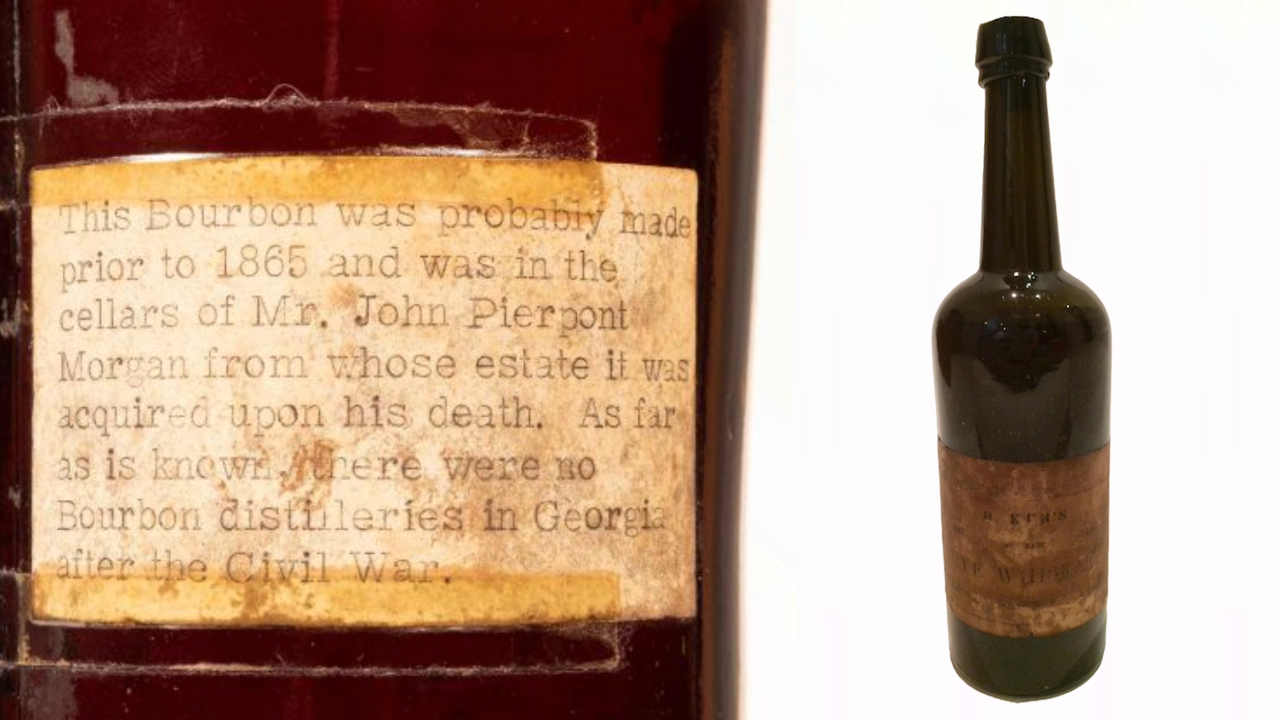
What’s the Oldest Whiskey in the World?
Whiskies hold a place of reverence, with a legacy that intertwines with the very fabric of history. Among these, one stands as a testament to time-honored craftsmanship and historical significance:
Baker’s Pure Rye Whiskey 1847
This extraordinary spirit is not just a bottle of whiskey; it’s a chronicle of a bygone era, holding the official Guinness World Records title for the oldest whiskey in the world. Its existence, stretching back to a time before the American Civil War, makes it a rare jewel in the crown of whiskey history.
Rye whiskey, with its bold and spicy profile, is celebrated as the original American whiskey. It’s a style that harks back to the early days of American distilling, a time when resourceful settlers and pioneers distilled rye into a spirit that would become a cornerstone of American liquor tradition.
Baker’s Pure Rye Whiskey 1847 encapsulates this rich heritage, a relic of a time when rye whiskey was not just a drink, but a symbol of American resilience and ingenuity.
The authenticity and provenance of Baker’s Pure Rye Whiskey 1847 have been meticulously verified, standing against other claims that have often been marred by inaccuracies or overstatements.
Notable examples include the supposed 1833 whisky discovered at Blair Castle in Scotland and the controversial dating claims of a whiskey assessed by Skinner Auctions in Boston as being from the “late 1700s.” Both instances highlight the importance of rigorous authentication in the world of rare spirits, where historical significance and value are closely intertwined.
The story of Baker’s Pure Rye Whiskey 1847 is not just about the liquid within the bottle. It’s a narrative that weaves together tidbits of whiskey history, showcasing the evolution of distilling techniques, the cultural context of whiskey consumption, and the meticulous process of verification and authentication that safeguards the integrity of such rare finds.
As we profile this remarkable spirit, we are not merely recounting its age or rarity. We are paying homage to a piece of liquid history, a spirit that has withstood the test of time and emerged as a symbol of the enduring legacy of whiskey-making. Baker’s Pure Rye Whiskey 1847 is a beacon of timeless elegance, a reminder of the rich tapestry of history that is ingrained in the world of aged whiskies.
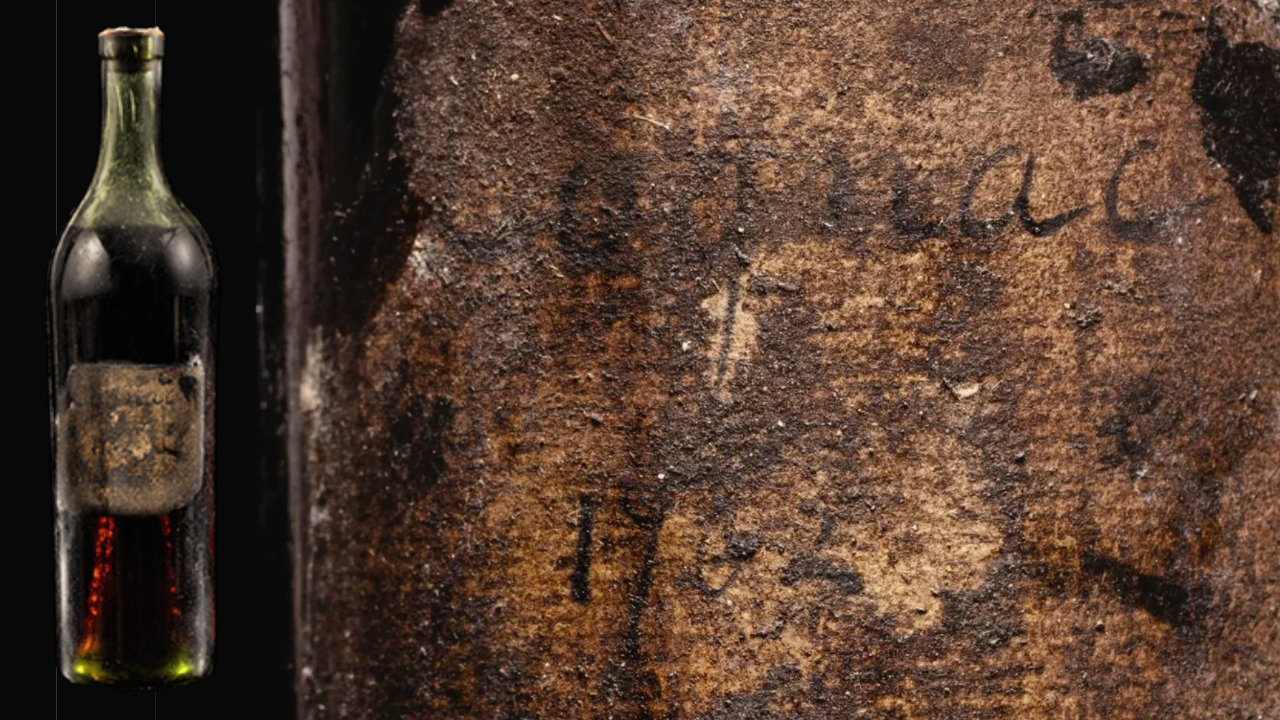
What’s the Oldest Brandy in the World?
There lies a gem that transcends the ordinary, a bottle that narrates a story not just of exquisite taste but of historical grandeur:
Baker’s Pure Rye Whiskey 1847
This is a brandy that epitomizes the zenith of luxury and rarity. Distilled over 260 years ago, this cognac is not only the world’s oldest but a bottle of unparalleled historical significance.
Cognac, the illustrious spirit distilled from white wine, is synonymous with elegance and refinement. Its creation in the commune of Cognac, France, is an art form, yielding a drink often savored in the quiet moments following a meal.
Yet, the Gautier Cognac 1762 elevates this experience to unprecedented heights. This extraordinary cognac, sold at Sotheby’s for a staggering $144,525, has set a benchmark as the most expensive bottle of cognac ever sold, a testament to its exceptional character and rarity.
But what renders this bottle a priceless treasure? Its story begins three decades before the French Revolution, during the reign of King Louis XV. The year 1762, the year of its distillation, was a time of significant historical events, including Britain’s entry into the Seven Years’ War and Catherine II’s ascension as Empress of Russia. This cognac is a liquid time capsule, capturing the essence of an era long passed.
The 1762 Gautier Cognac, aged gracefully, is the last and largest of only three bottles of this rare vintage to still exist, each adorned with their original labels. These bottles, safeguarded within the same family for generations before their momentous sales, are more than just spirits; they are artifacts of history.
The rarity of this cognac is further emphasized by its pre-phylloxera viticulture, a period before the devastating vine pest that reshaped the wine and cognac industry. This bottle, not just a superb brandy but a distillation of Cognac’s rich history, was likely bottled in the 1840s, adding another layer to its remarkable story.
The Gautier Cognac 1762 is more than just a rare and expensive spirit; it is a symbol of history, a testament to the art of cognac making, and a beacon of the legacy that fine spirits carry. This bottle, alongside its siblings – one housed in the Gautier Museum and the other sold in New York in 2014 – represents a pinnacle of spirit collecting, transcending beyond the realm of connoisseurship into a realm where history and luxury intertwine.
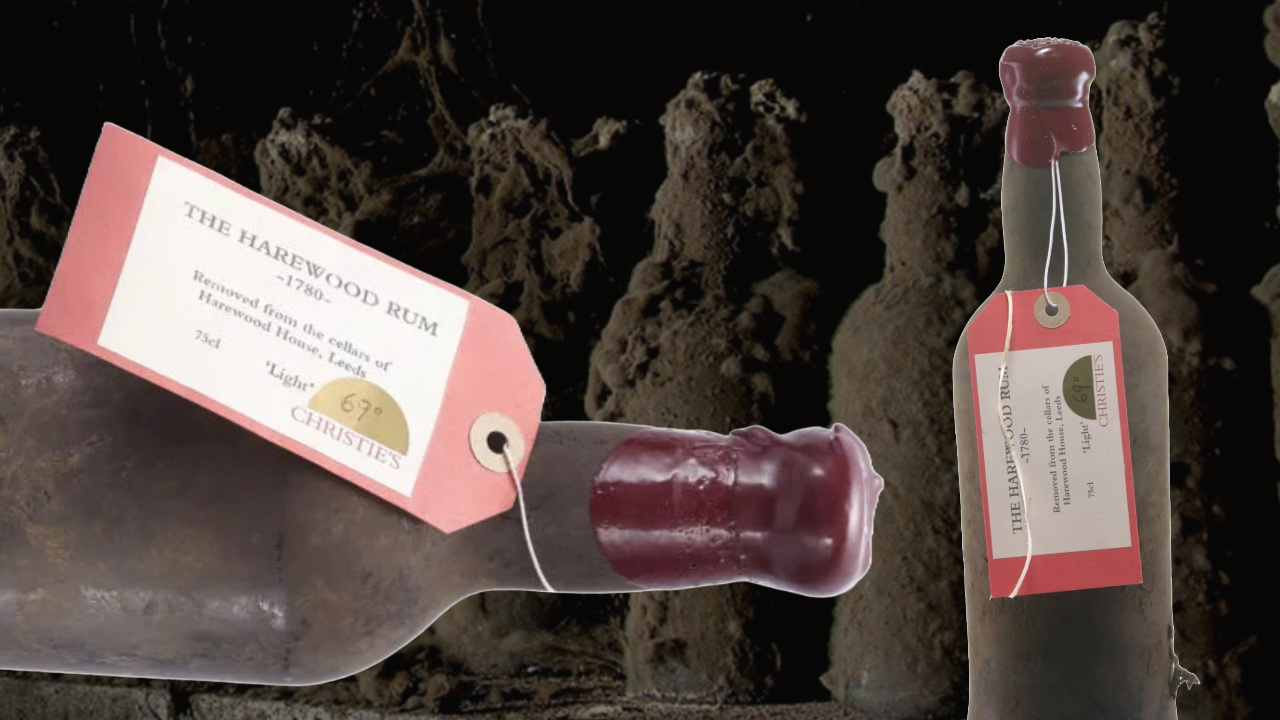
What’s the Oldest Rum in the World?
In the world of aged spirits, rum holds a distinct place, often evoking images of sun-drenched Caribbean isles and the adventurous spirit of the high seas. Yet, in the annals of rum history, one bottle stands out for its age and the story it tells:
1780 Harewood Barbados Rum
This dark rum from the Harewood estate in Barbados, a spirit that not only captures the essence of a bygone era but also holds the Guinness World Record for the world’s oldest known rum.
This remarkable rum, recently sold by Miami-based Old Liquors Inc. to a collector in Switzerland for a noteworthy $29,999, is a testament to the enduring allure of rare spirits. Distilled nearly 250 years ago, this bottle’s journey from the Harewood House in Leeds, U.K., to its current prominence in the world of spirit collecting is a narrative steeped in history.
Originally unearthed in 2011 and first sold at Christie’s in 2013 for around $9,500, the 1780 Harewood rum is more than just an aged spirit; it is a liquid relic of the past. Its amber hue, housing an ABV of around 58 percent, carries with it flavors of spiced orange, cedar, and caramel – a profile rich in complexity and depth.
The history of this rum is intrinsically linked to the darker chapters of human history. The Harewood estate’s connection to the Caribbean slave trade, a painful and somber reminder of the era in which this rum was distilled, adds a layer of historical significance to the bottle.
The sugarcane fields that fueled the rum industry in those times were tended by enslaved Africans, a truth that underlines the complex and often troubling history of colonial enterprises.
Despite its controversial origins, the 1780 Harewood rum stands as a rare find in the world of vintage spirits. It is part of a larger discovery from the Harewood estate, where 59 bottles of both light and dark rum were found, though only 23 have withstood the test of time.
This bottle of rum, with its deep historical roots and unique flavor profile, is more than just a collector’s item. It is a window into the past, a reflection of the times and circumstances that shaped the world of spirits. The sale of this bottle signifies the enduring appeal of rare and exceptional spirits. It is a reminder of the intricate tapestry of history, culture, and craftsmanship that is woven into the world of fine rum collecting.
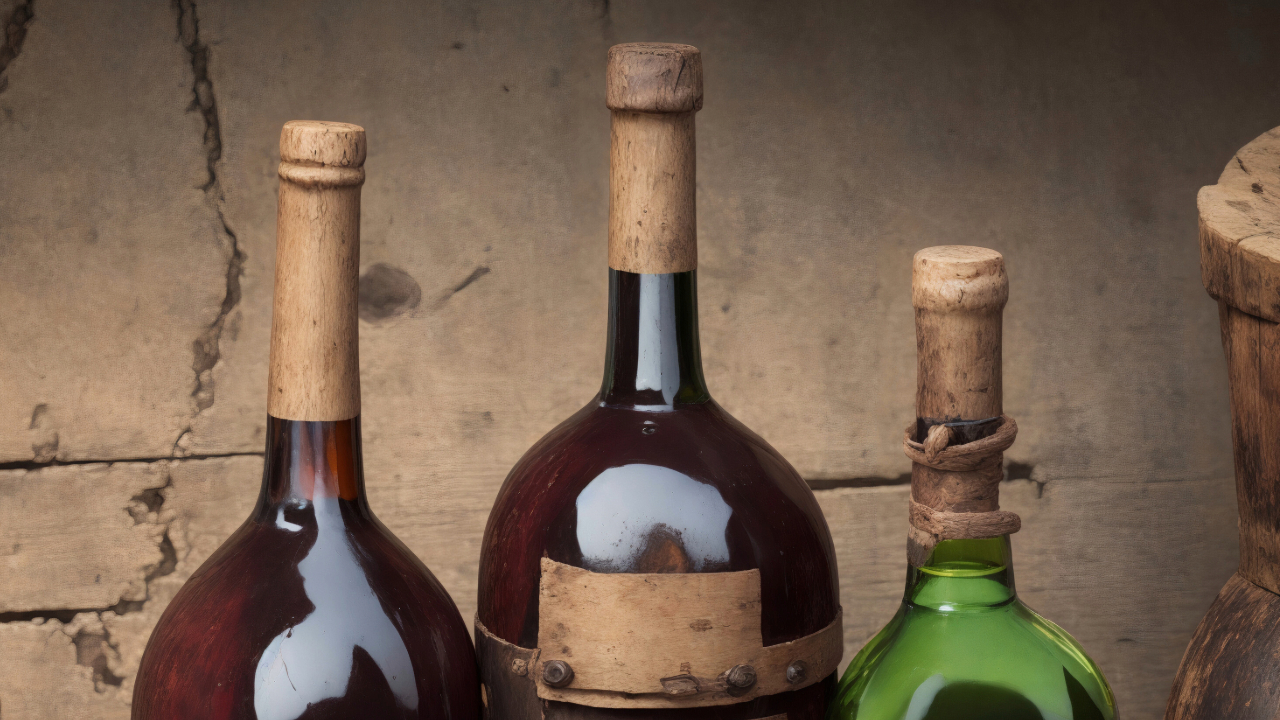
The Mystique of Limited Editions
Limited edition releases stand as coveted treasures, each bottle a rare gem that beckons connoisseurs and collectors alike. These spirits, often released in small batches or as one-time offerings, carry with them an air of mystique, elevating them beyond mere beverages to artifacts of craftsmanship and exclusivity.
The allure of limited-run spirits lies in their scarcity. Each bottle is a fleeting opportunity, a momentary glimpse into the artistry and innovation of the distiller’s craft. This rarity not only enhances the value of these spirits but also their appeal. For enthusiasts and collectors, acquiring a limited edition bottle is akin to securing a piece of history, a snapshot of a distillery’s journey captured in liquid form.
Moreover, limited editions often represent the pinnacle of a distiller’s creativity and skill. They are the result of experimental techniques, unique aging processes, or the use of rare ingredients. This innovation is not just a display of the distiller’s prowess but also a contribution to the evolution of spirits as a whole. Each new release pushes the boundaries of what is possible, offering connoisseurs a taste of the extraordinary.
The impact of these limited editions on connoisseurship is profound. They challenge and expand the palates of enthusiasts, introducing new flavor profiles and complexities. In a world where the pursuit of uniqueness is ever-growing, these spirits offer a distinctive experience, a chance to savor something truly one-of-a-kind.
But beyond taste, limited edition spirits also embody stories – of heritage, tradition, and the relentless pursuit of excellence. They are often released to commemorate milestones, celebrate history, or honor the legacy of a renowned distiller. This narrative dimension adds depth to the experience of enjoying these spirits, connecting the drinker to the journey behind the bottle.
In essence, the mystique of limited editions is a tapestry woven from rarity, innovation, and story. These spirits are not just a part of a collection; they are a celebration of the art of distillation, an homage to the tireless pursuit of perfection. For connoisseurs, each bottle is an invitation to explore the depths of flavor, craftsmanship, and history – a journey into the heart of what makes spirits not just drinks, but expressions of culture and artistry.
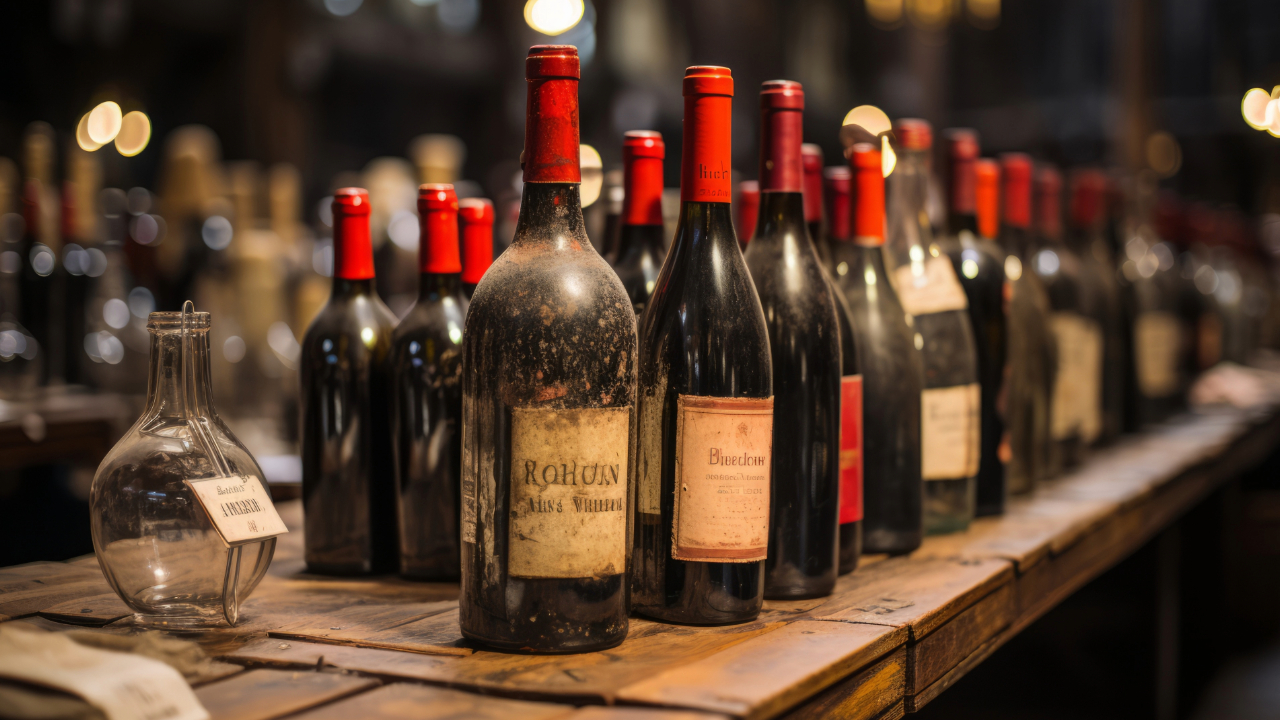
Auction Exclusives: When Spirits Become Investments
The auction house presents a stage where rarity and history command the spotlight, turning select bottles into coveted treasures and wise investments. The world of spirits auctions is a fascinating intersection of passion and economics, where the value of a bottle transcends its contents, becoming a symbol of rarity, historical significance, and potential financial gain.
The auctioning of spirits is not just a trade of rare bottles; it is a celebration of their story and heritage. Each bottle that goes under the hammer carries with it a narrative, be it an extraordinary provenance, a link to historical events, or the artistry of a legendary distiller. These stories are as much a part of the auction as the spirits themselves, captivating bidders with the allure of owning a piece of history.
Among the most coveted bottles in these auctions are those with exceptional age and rarity. Limited editions, discontinued batches, and spirits with historical significance often see fierce bidding, as collectors and enthusiasts vie to add these exclusive bottles to their assemblages. The appeal lies not only in the spirit’s quality and taste but in the prestige and exclusivity of owning such a rare find.
Furthermore, spirits auctions have become a barometer for the market, reflecting trends and preferences within the world of fine liquors. They offer insights into what collectors and connoisseurs value, be it age, origin, or the story behind the bottle. This dynamic market often sees new records being set, as more bidders enter the arena, drawn by the potential of these spirits as lucrative investments.
The investment aspect of these auctions cannot be understated. For many, acquiring rare spirits at auction is a strategic decision, a way to diversify one’s portfolio with assets that appreciate over time. The growing interest in rare spirits as investment pieces has added a new dimension to the auction world, attracting not just traditional collectors but also financial investors.
The world of spirits auctions is a captivating blend of passion, history, and investment. It is a space where the value of a bottle is defined by more than its age or rarity; it is shaped by the stories it tells and the future potential it holds. For those who partake in these auctions, each bid is a step into a world where spirits are not just enjoyed but celebrated as embodiments of history, artistry, and timeless value.
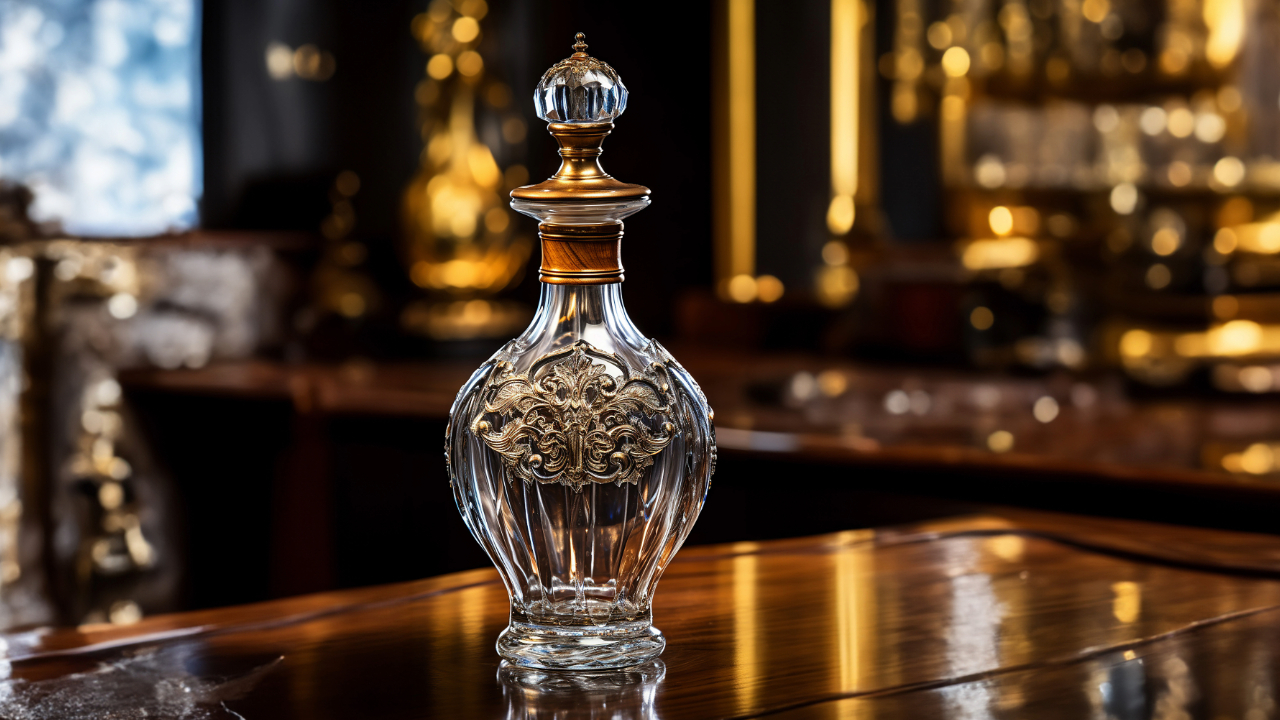
Unearthing the Unattainable: The Quest for Rare Spirits
In the captivating narrative of rare spirits, there exists a breed of aficionados for whom the pursuit of the unattainable is not just a hobby, but a fervent quest. These are the spirits hunters, individuals driven by a passion to discover and acquire the rarest bottles in the world. Their journeys, often filled with intrigue and perseverance, are as intoxicating as the spirits they seek.
These hunters of elusive liquors traverse the globe, their expeditions taking them to remote corners, forgotten cellars, and exclusive auctions. Their mission is to uncover hidden treasures – bottles that have been overlooked, forgotten, or unknown. Each discovery is a triumph, a moment where history and rarity converge to unveil a spirit that transcends the ordinary.
The quest for these rare bottles is fueled by a deep appreciation for the artistry and history behind each spirit. Hunters are often drawn to the stories that each bottle holds – tales of historic distilleries, lost recipes, and time-honored traditions. The allure lies not just in owning these spirits, but in being a part of their rich, often mysterious, history.
This pursuit is not without its challenges. The rarest spirits are often shrouded in obscurity, their existence known to only a few. The path to acquiring them can be labyrinthine, involving meticulous research, networking with fellow connoisseurs, and sometimes, serendipitous encounters. The thrill of the hunt lies in piecing together clues, tracking down leads, and ultimately, unearthing these coveted bottles.
Each successful find is a significant achievement. Whether it’s a long-lost vintage, a limited edition release, or a bottle from a now-defunct distillery, these discoveries are celebrated for their rarity and uniqueness. They are the trophies of the spirits hunters, symbols of their dedication, expertise, and unwavering passion.
Beyond the personal satisfaction, these rare finds often play a crucial role in the broader world of spirits. They contribute to the understanding and appreciation of the history and evolution of distillation. These bottles provide insights into past techniques and styles, adding depth and richness to the narrative of spirits.
In the world of rare spirits, the hunters play a vital role. Their quests not only lead to the discovery of remarkable bottles but also keep alive the stories and traditions of the spirits world. They remind us that the pursuit of the unattainable is not just about acquisition but about the joy of discovery and the celebration of history and craftsmanship in each rare and exquisite bottle.
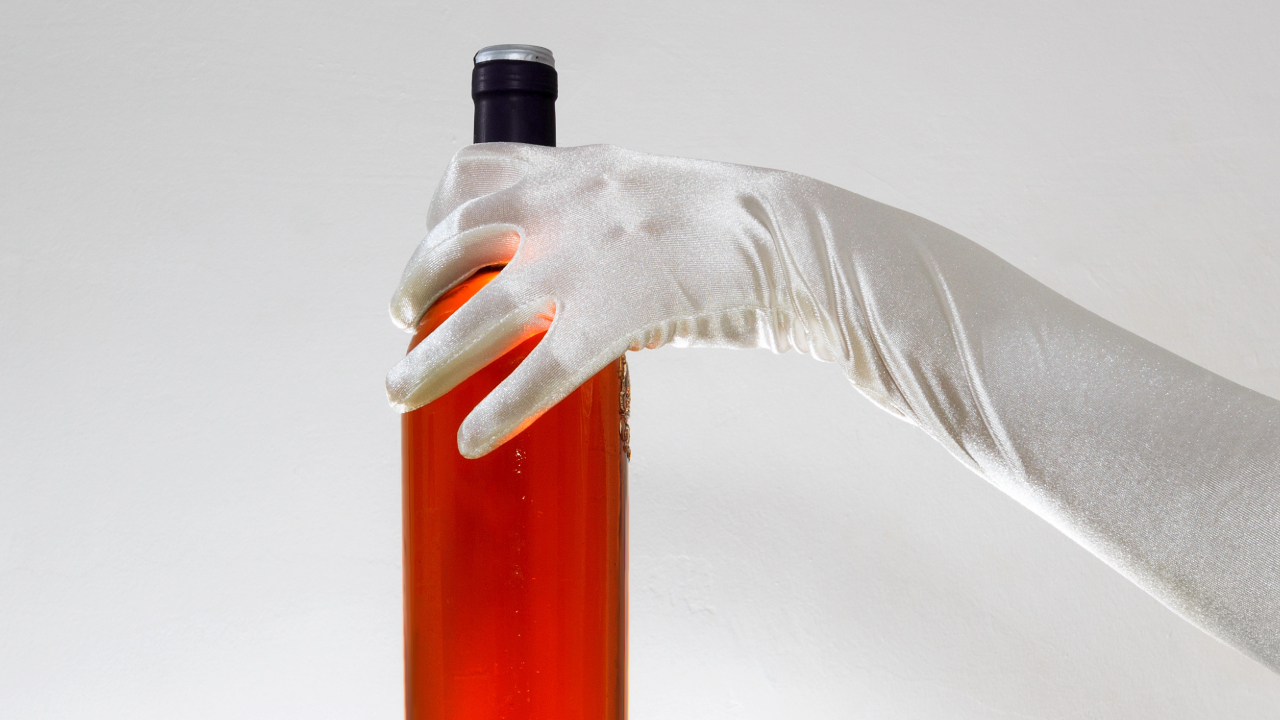
Preservation and Appreciation: Caring for Rare Spirits
In the distinguished world of rare and aged spirits, the art of preservation and appreciation is as essential as the distilling process itself.
For collectors and enthusiasts, understanding the nuances of caring for these precious bottles is not just a matter of maintaining value; it is an act of reverence, a way to honor the history and craftsmanship encapsulated within each bottle.
Proper storage is the cornerstone of preserving rare spirits. These liquid treasures are sensitive to their environment; thus, maintaining a stable temperature is crucial. Ideally, spirits should be kept in a cool, consistent climate, away from direct sunlight and fluctuating temperatures that could compromise their integrity. A controlled environment ensures that the delicate balance of flavors and aromas, developed over years of aging, remains unaltered.
Humidity plays a pivotal role as well. Excessive dryness can lead to the cork drying out, allowing air to infiltrate the bottle and potentially spoiling the spirit. Conversely, too much humidity can foster mold growth and damage labels, reducing the bottle’s aesthetic and historical value. Striking the right balance in humidity levels is key to preserving both the spirit and its presentation.
Orientation of the bottle is another vital consideration. Unlike wine, spirits are best stored upright. This prevents the high alcohol content from deteriorating the cork, which could lead to evaporation or contamination of the spirit. Ensuring bottles remain upright safeguards the seal and maintains the purity of the spirit within.
When it comes to appreciating these rare spirits, the experience is as much about the context as it is about the taste. Each bottle has a story – a legacy of its origins, distillation, and journey. Understanding this narrative adds depth to the tasting experience, connecting the drinker to the spirit’s history and the hands that crafted it.
Tasting itself should be approached with respect and patience. Aged spirits unveil their complexities slowly; they are best savored in a suitable glass, which allows their aromas to unfold fully. A gentle swirl, a thoughtful sniff, and a slow sip are the steps to truly appreciating the nuanced flavors and aromas of these exquisite spirits.
Furthermore, sharing these rare finds with others can enhance the appreciation. Tasting sessions with fellow enthusiasts provide an opportunity to discuss, learn, and celebrate the unique qualities of each spirit. It is through these shared experiences that the true value of rare and aged spirits is realized – not just in their monetary worth, but in the joy and knowledge they bring to those who appreciate them.
The preservation and appreciation of rare spirits are arts unto themselves. They require knowledge, care, and a deep appreciation for the craft of distillation. By adhering to these best practices, collectors and enthusiasts not only safeguard their precious bottles but also pay homage to the rich traditions and meticulous craftsmanship that gave birth to these remarkable spirits.
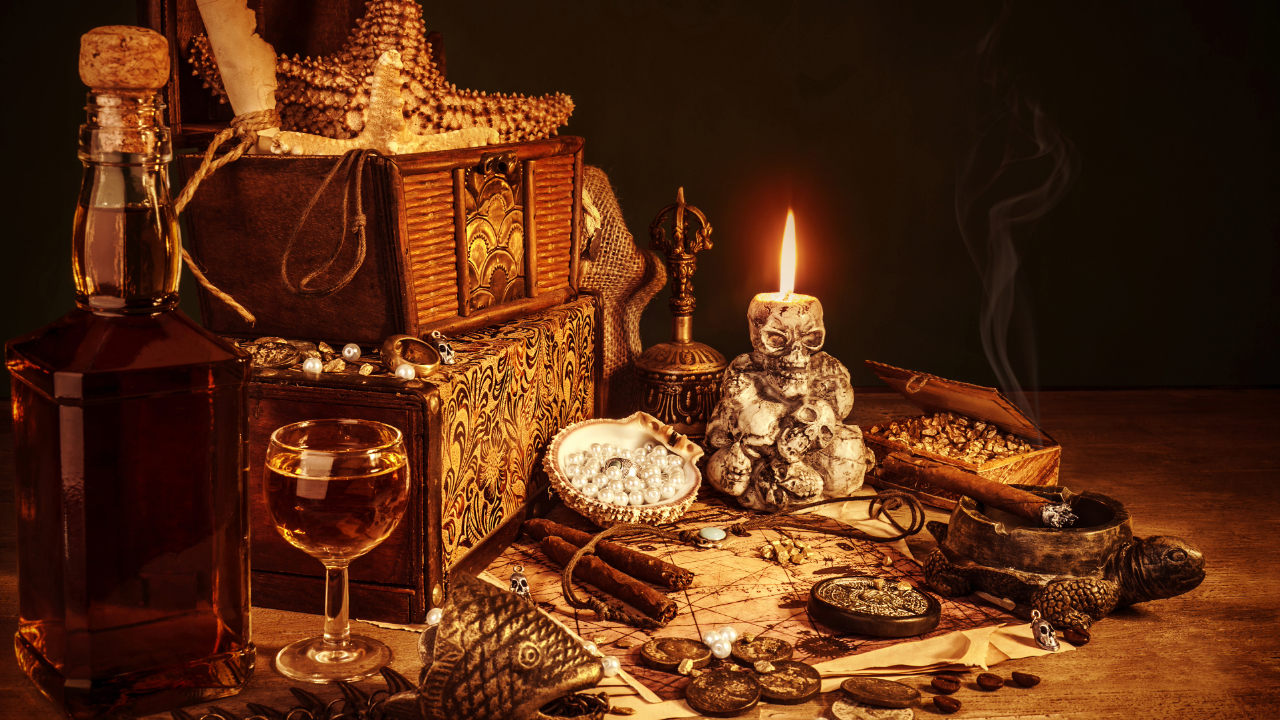
Future Collectibiles: Today’s Spirits, Tomorrow’s Treasures
Discerning what will become the treasured collectibles of tomorrow is an art form in itself. Today’s spirits, crafted with innovation and a nod to tradition, have the potential to become the sought-after rarities of future generations. For collectors and aficionados, the intrigue lies in identifying these future gems, understanding the qualities that will elevate them from contemporary bottles to tomorrow’s treasures.
One key aspect in predicting future collectibles is the recognition of innovation in distillation and aging processes. Distilleries that push the boundaries, experimenting with unique ingredients, unconventional aging techniques, or limited production runs, often create spirits that pique the interest of collectors. These bottles represent the cutting edge of the distilling world, offering a glimpse into the future of spirit-making.
Another factor is the story behind the spirit. Spirits that are linked to significant events, crafted by renowned distillers, or produced in historic distilleries carry with them a narrative that adds to their allure. As time passes, the story behind a bottle often becomes as valuable as the spirit itself, imbuing it with a cultural and historical significance that transcends its physical value.
Limited releases and special editions also hold the promise of becoming future collectibles. These spirits, often produced in small quantities, create a sense of exclusivity and rarity from the outset. As they become more scarce in the market, their desirability and value to collectors and enthusiasts can increase exponentially.
Additionally, the rise of craft distilleries has introduced a plethora of unique and high-quality spirits. These small-batch productions, often characterized by artisanal methods and a strong emphasis on quality and flavor, have the potential to become highly coveted items in the years to come. Their distinct character and limited availability make them prime candidates for future collectibles.
Understanding the market trends and the evolving tastes of spirit enthusiasts is also crucial. Spirits that capture the zeitgeist, whether through innovative branding, a focus on sustainability, or a revival of forgotten styles, often gain a following that grows over time. As these trends mature, so does the potential for these spirits to become prized collectibles.
The world of future collectibles is a tapestry woven from innovation, narrative, exclusivity, craftsmanship, and market trends. Identifying today’s spirits that embody these qualities requires insight, foresight, and a deep understanding of the spirit world.
For collectors, this pursuit is not just about acquiring bottles; it’s about capturing a piece of history, a snapshot of the ever-changing landscape of distillation and taste. As we look to the future, these spirits stand poised to transition from contemporary creations to the revered treasures of tomorrow.
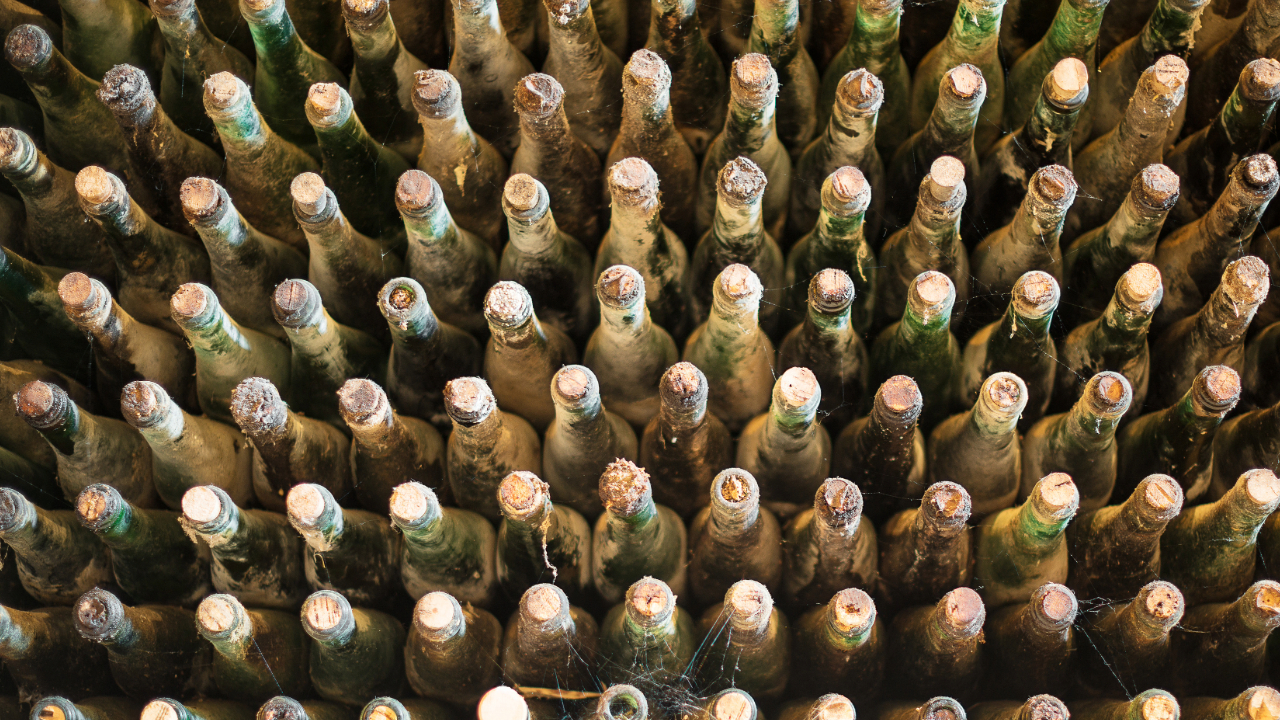
The Enduring Allure of the Rare and Aged
As we draw to a close on our exploration of the world’s oldest and rarest spirits, we are left with a profound appreciation for the enduring allure of these exceptional libations. These spirits are not just mere beverages; they are the embodiment of history, craftsmanship, and the relentless pursuit of excellence. Their rarity and age speak to us in a language of depth, complexity, and mystique, offering a sensory journey through time and tradition.
The oldest spirits, with their deep roots in the past, serve as liquid chronicles, telling tales of bygone eras, historic distilleries, and long-forgotten methods. They are treasured not only for their exquisite flavors but also for their historical significance. In each sip, we taste the essence of the period they were created in, a connection to the past that is as intoxicating as the spirit itself.
The allure of these rare finds is further magnified by their scarcity. The pursuit of these bottles, often akin to a treasure hunt, adds an element of excitement and exclusivity to the world of spirit collecting. It is this chase, the thrill of discovering something elusive and coveted, that captivates enthusiasts and collectors around the globe.
The appreciation of these spirits goes beyond their physical existence. It is a celebration of the artistry and innovation that goes into their creation. From the selection of ingredients to the intricate processes of distillation and aging, each bottle is a testament to the skill and dedication of its creators.
As we look towards the future, the fascination with rare and aged spirits continues to evolve. New generations of distillers are pushing the boundaries, creating spirits that will one day join the ranks of the rare and revered. The landscape of collectible spirits is ever-changing, yet the reverence for age-old traditions and the quest for rarity remains constant.
In conclusion, the world of the oldest and rarest spirits is a rich tapestry, woven from history, craftsmanship, and the human desire for excellence. These spirits offer more than just a drink; they provide an experience, a connection to the past, and a glimpse into the art and science of distillation.
Their enduring appeal lies in their ability to tell a story, to transport us to different times and places, and to remind us of the timeless beauty that lies in the pursuit of perfection.

